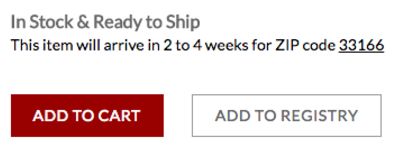The success of any e-commerce business hinges upon the ability to deliver orders as promised and to maintain high levels of customer satisfaction. When shipping problems arise and threaten your ability to achieve these goals you need to respond swiftly. You also need to be proactive and assertive with your approach to shipping; this will also help you control costs. Below are 7 e-commerce shipping best practices to help you optimize revenue and increase customer satisfaction.
1) Investigate tracking details yourself as soon as a shipping problem is reported.
While you might not be able to personally trace and retrieve a lost shipment for your customer, you can track the shipment online to see if the problem stems from a manageable issue such as an incorrect address or illegible contact information.
2) Accept responsibility for problems with a carrier and take action immediately.
While it might be true that you did not personally lose or damage a package, you did make the decision to use the carrier that misplaced or damaged the shipment. Take responsibility for the problem and follow-up with the carrier until the issue is resolved. Ship a replacement item as quickly as possible to maintain your customer’s satisfaction as you follow-up on the claim.
![]()
4) Refrain from over-inflating shipping costs.
While you might be tempted to inflate shipping costs in an effort to cover insurance, you also run the risk of driving your customers straight into the arms of another e-commerce company that self-insures. (A popular insurance option for small businesses is http://www.shipsurance.com/.)
5) Consider offering free shipping.
Free shipping tends to make the most sense with large orders or sales with high profit margins. Be sure to use discretion when offering free shipping, or you could end up losing money. A good way to cover costs and encourage bigger shopping carts is to offer free shipping on orders over a certain threshold (.i.e. $25).

6) Make customers aware of expected delivery date.
Consumer expectations and impatience seem to be rising in tandem. You can help less some of latter by clearly showing customers the estimated delivery date for items you sell. This will soothe them and give confidence in your company as well as save a phone call to customer service.

7) Be aware of relevant restrictions before shipping items internationally.
You might be prohibited by law from shipping to embargoed countries. Additionally, some carriers have restrictions on the type of items that you can ship overseas. If your knowledge of international shipping regulations is limited, check with your carrier.
We believe these ideas will increase customer satisfaction in the short term and loyalty in the long.






